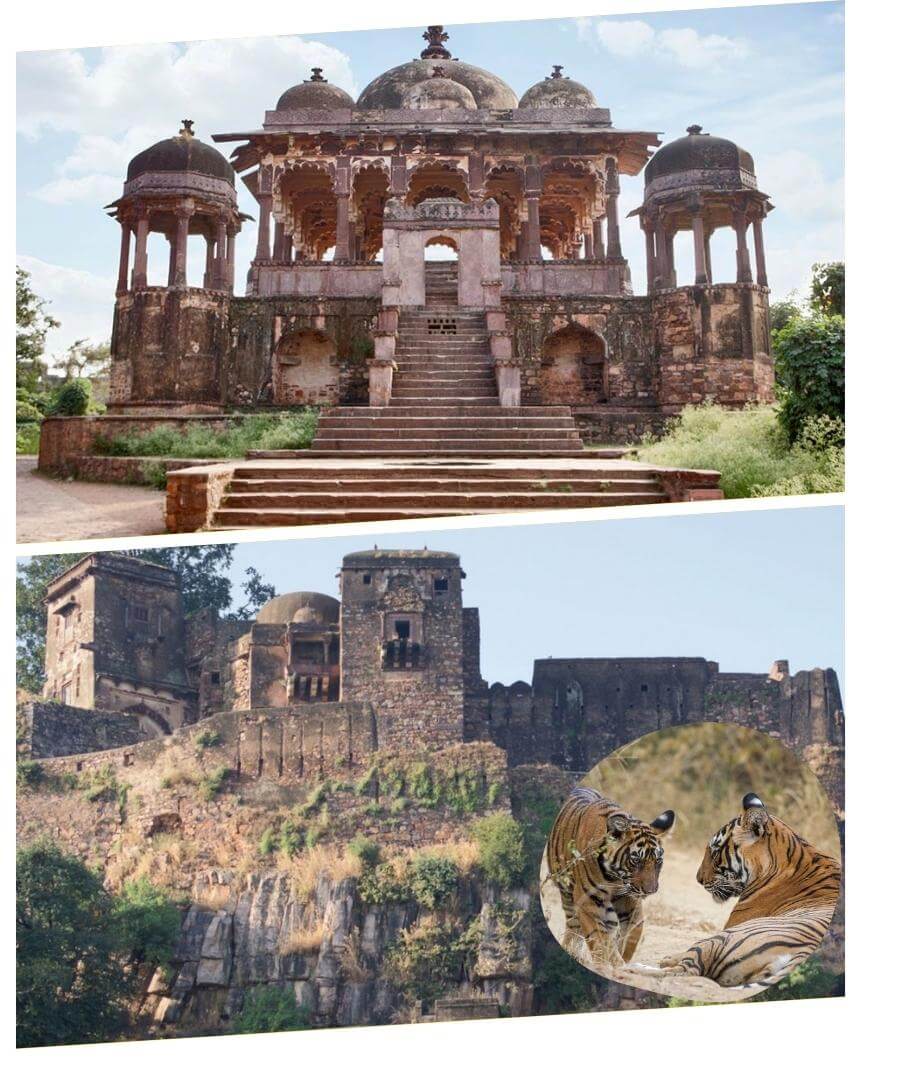
Ranthambore
Best Places to Visit in Ranthambore
Ranthambore, one of the most remarkable locations among travelers, is located in the heart of Jaipur between Bharatpur and Kota in Sawai Madhopur District. 130 km away from Jaipur, Ranthambore is listed among the reserves protected under Project Tiger and is one of the most filmed wildfire reserves. Moreover,It was proclaimed as a game sanctuary in 1955.
Ranthambore is located at the height of 700ft. and welcomes you with spectacular and historic views, greenery, plain area, deserts, and generous localite and tiger reserves. On June 21, 2013, Ranthambore was recognized as a UNESCO World Heritage Site, under a group of hill forts of Rajasthan.
Sawai Madhopur District
Before dipping directly into Ranthambore's history let’s discover some specialties about the gateway to Ranthambore that is Sawai Madhopur. Built by Maharaja Madho Singh I of Jaipur (1751 – 1768) Sawai Madhopur was founded in 1763 and it celebrates its foundation day annually on 19 January which is popularly known as Sawai Madhopur Utsav.
Sawai Madhopur is located in southeast Rajasthan and has a subtropical, dry climate with typical winter, summer, and rainy seasons.
This city has many tourist sites including, Ranthambore Fort, Khandar Fort, and revered temples like Alanpur Jain Temple and Baori. Sawai Madhopur also celebrates some fairs like Sawai Madhopur Utsav, Ganesh Chaturthi Fair, Chauth Mata Fair, Kaila Devi Fair, Shivratri Fair, are some of many popular ones. It attracts most of the visitors between November and May.
The people of Sawai Madhopur are very hospitable and they mostly speak English, Hindi, and Dhundari.
Tourist Places in Ranthambore
History
Initially known as Ranastambha or Ranastambhapura, Ranthambore has a long vibrant history of rulers and warriors. There are many theories about Ranthambore and its majesties, one of them is that Ranthambore got its name from its originator Ranthamandeva. Another theory says that Ranthambore Fort was built by King Jayant, a Chauhan Rajput, in 1110 AD. Construction of the fort commenced during the mid-10th Century A.D. and continued for a few centuries after that.
It gained its popularity during the times of Hammir Dev Chauhan, who also happened to be the last ruler of Ranthambore (1283 - 1301 AD) from the Chauhan Dynasty. During his time Sultan Jalaluddin Khilji and Alauddin Khilji fought to conquer Ranthambore but failed.
Apart from this, the fort was also captured by some powerful kings of Mewar. Rana Hamir Singh (1326–1364), Rana Kumbha (1433–1468), and Rana Sanga (1508–1528). Bahadur Shah of Gujarat who owned the fort from 1532 to 1535 and was the last king to rule over Rajasthan.
Ranthambore National Park
Ranthambore National Park is surrounded by the Vindhya and Aravali hill ranges and is located very near to the Thar Desert, covering a total area of 392 km2, including the buffer zone(area with abundant wildlife) and the core zone (area with less wildlife) It was a hunting ground of the Great Kings of Jaipur. There are special hunting lodges, old fortifications, majestic and mini forts all around the park. Not just all of that there are also temples, lakes, museums, a valley, a school of art and an adventure park and so much more to explore.


People of Ranthambore
The people of Ranthambore are hospitable and belong to diverse castes and religions. Most of the people there are indulged in black pottery, creating artifacts that brag about the rich culture and traditions of Rajasthan. Local markets of Sawai are overflowed with traditional heavy pieces of jewelry, paintings, and puppets.
The city is also famous for its lip-smacking Rajasthani dishes including Dal Bati Churma, and Gatte ki Sabzi as well as various multi-cuisine dishes offered at various resorts and restaurants in the city.
